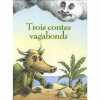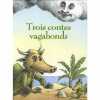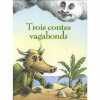240 books for « maes j »Edit
-
Language
Dutch (14)
English (3)
French (239)
-
Century
19th (8)
20th (75)
21st (32)
-
Countries
Belgium (135)
Canada (1)
Côte d'Ivoire (2)
France (101)
Netherlands (2)
Switzerland (15)
-
Syndicate
ALAC (1)
CLAM (21)
ILAB (53)
SLAM (30)
Topics
- Academy (1)
- Administration (1)
- Africa (4)
- Antwerp (6)
- Archaeology (3)
- Architecture (14)
- Arts pc (1)
- Bank - stock exchange (1)
- Beguinage (1)
- Belgium (34)
- Biography (5)
- Bronze (1)
- Brussels (1)
- Burgundy (1)
- Canada (1)
- Cap (1)
- Children’s books (5)
- Churches (1)
- Cinema (1)
- Cocoa (1)
- Colette (3)
- Collections (1)
- Comic strip (3)
- Commune (1)
- Congo (8)
- Cosyns (1)
- Customs (1)
- Drawings (1)
- Drouot (1)
- Economics (3)
- Emigration (1)
- Engraving (books about) (2)
- Entomology (3)
- Ethnography (5)
- Ethnology (2)
- Exhibition catalogue (1)
- Fashion (3)
- Flanders (1)
- Flemish (5)
- Flora (2)
- Football (1)
- Football (1)
- Genealogy (1)
- Geography (1)
- Greek (1)
- Hagiography (1)
- Haydn joseph (1)
- History (26)
- Holland (1)
- Humanitarian sciences (1)
- Hunting (5)
- Industrial arts & crafts - fine arts (5)
- Internet (1)
- Law (1)
- Legends (1)
- Linguistics (1)
- Literature (21)
- Lorrain (1)
- Maes pierre (6)
- Midi pyrenees (1)
- Miracles (1)
- Mountaineering climbing (1)
- Museums (1)
- Music (2)
- Napoleon i (1)
- Navy (1)
- Ornithology (1)
- Painting (2)
- Painting (3)
- Parliament (1)
- Philosophy (2)
- Photography (2)
- Physics (1)
- Pilgrimage (1)
- Public sale (11)
- Religions (3)
- Review (2)
- Romanticism (2)
- Rome (2)
- School (1)
- Sciences (10)
- Sculpture (4)
- Socialism (1)
- Sports (1)
- Stendhal (3)
- Sweden (2)
- Symbolism (2)
- Tea (2)
- Testimonies / stories (2)
- Theatre (1)
- Van dyck (2)
- Vanoise (1)
- Various (1)
- War (2)
- Watteau (2)
- Wildlife (1)
Les Watteau de Lille - Louis Watteau (1731-1798) - François Watteau (1758-1823)
Editions Arthéna, Paris, 1998. In-4, reliure pleine toile éditeur sous jaquette illustrée en couleur, 586 pp. Préface, par Christian Michel - Introduction - Louis Watteau : Biographie : Des débuts mal connus (1731-1765). - Premières années lilloises (1766-1778). - Louis Watteau peintre officiel de la ville de Lille (1778-1789). - La période révolutionnaire (1789-1798) - L'oeuvre ...
Abondante iconographie en noir et en couleur. --- Plus d'informations sur le site archivesdunord.com
Phone number : 01 42 73 13 41
Selma Lagerlöf sa vie, son oeuvre
Editions "Je sers", Etudes de littérature, d'art et d'histoire, Paris, 1939. I,-12, broché sous couverture illustrée en noir, 248 pp. Préface, par Lucien Maury - La vie de Selma Lagerlöf - La vie et les oeuvres de Selma Lagerlöf - La philosophie de Selma Lagerlöf - Table des concordances bibliographiques - Table des planches - Table des matières.
Avec un portrait photographique de Selma Lagerlöf en frontispice et 9 planches en hors texte. --- Plus d'informations sur le site archivesdunord.com
Phone number : 01 42 73 13 41
Invention Interprétation Reproduction - Gravure des anciens Pays-Bas (1550-1700)
Editions Gourcuff Gradenigo, Paris, 2006. In-4, broché sous couverture rempliée et illustrée en noir et blanc, 190 pp. Feuille à feuille, Sophie Raux et Dominique Tonneau-Ryckelynck - Avant-propos, par Françoise Baligand, conservateur en chef du musée de la Chartreuse - Introduction - Catalogue : I. Notions historiques et techniques : La gravure dans les anciens Pays-Bas : entre ...
Nombreuses illustrations en noir et blanc in et hors texte. --- Plus d'informations sur le site archivesdunord.com
Phone number : 01 42 73 13 41
Georges Rodenbach 1855-1898
Eugène Figuière, Editeur, Paris et Bruxelles, 1926 In-12, broché, 297 pp. Première Partie : En Belgique - Chap. I. L'enfance et l'adolescence (1855-1877). - Chap. II. Le premier séjour du poète à Paris (1877-1879). - Chap. III. Le retour à Gand. - Débuts au barreau et à la "Flandre Libérale". - ...
Exemplaire partiellement découpé. --- Plus d'informations sur le site archivesdunord.com
Phone number : 01 42 73 13 41
GEORGES MAES IN HET BELGISCH MUZIEKLEVEN (1946-1976). GEORGES MAES EEN AANDEKEN/EN MEMOIRE HAYDN KWARTET/QUATOR HAYDN. SOLISTEN VAN HET BELGISH KAMERORKEST/LES SOLISTES DE L'ORCHESTRE DE CHAMBRE DE BELGIQUE.
Gent, Fonds Georges Maes, 1978 Gebonden, hard cover, beige linnen met goudopdruk, originele uitgeversomslag in z/w met flappen, 25x32 cm., 207 pp. Gedenkplatenalbum door het Belgisch Kamerorkest. Boek + gedenkplatenalbum in zwarte foedraal met goudopdruk.
Oplage 1500 ex. Foedraal lichtjes beschadigd.
Ives Maes - Sunville Sunville / Zonhoven
, ludion, 2018 hardcover, 160 pages, Illustrated. 32,7 x 25,6 x 2,4 cm, text in English. ISBN 9789491819841.
Ives Maes grew up in Sunville, a free translation of the Flemish village of Zonhoven. After his brother?s suicide, Maes returned to his homestead and wandered the countryside with a camera and stacks of accidentally expired film. The colour shifts in the photographs he took during these walks suggest an indefinable time. He combined them with snapshots from the family album and images found in the village?s historical archive, and continued to photograph his childhood home during six successive seasons, until a partial solar eclipse put a symbolical end to these recordings. Sunville is a personal quest into Maes?s memories, and explores the peripheries of the medium.
Tamara Van San : indian shuffle, 2004-2014
Brussels : , Tornado editions, 2014 Hardcover 196 pages, Illustrated.26 x 19.3 . Text NL/FR/ENG ISBN 9789079282142.
Tamara Van San This book provides a concise overview of the works created and exhibited by Tamara Van San (1982) over the last ten years. It contains more than 200 photographs, articles by Dan Howard-Birt and Frank Maes and a conversation between the artist and Carla Van Campenhout. Ce livre pr sente un bref aper u de l'oeuvre cr e et expos e par Tamara Van San (1982) durant ces dix derni res ann es. Il contient plus que 200 photos, des textes de Dan Howard-Birt et Frank Maes, ainsi qu'un entretien de l'artiste avec Carla Van Campenhout. Dit boek geeft een gebald overzicht van de werken van Tamara Van San (1982) die de voorbije tien jaar tot stand zijn gekomen en werden tentoongesteld. Het bevat meer dan 200 foto's, beschouwingen van Dan Howard-Birt en Frank Maes en een gesprek van de kunstenaar met Carla Van Campenhout.
Robert Maes. Alter-ego. Een auto-biografie.
S.l., bij de auteurs, S.d. (1972) Softcover, 157pp., 29x21cm., ills. in z/w., goede staat.
Zeldzame publicatie naar aanleiding van de tentoonstelling Robert Maes - C. Buysse 1972.
Dupont Charlie Wauters Paul Maes Philip Brandt Koen Collectif
Reference : 500116930
(2013)
ISBN : 9789037489224
LES CYGNES SAUVAGES
Le Ballon 2013 40 pages 23x23x1cm. 2013. Broché. 40 pages.
Neuf sous blister - issu de destockage - pouvant présenter traces de stockage - fissure sur le blister - Expédié soigneusement dans emballage adapté
Scrapbooking & lettrage créatif - L'art de l'écriture à la main pour sublimer vos créations
Créapassions.com 2019 144 pages 22x24x2cm. 2019. Broché. 144 pages.
Très bon état - L'ouvrage qui n'a jamais été lu peut présenter de légères traces de stockage mais est du reste en très bon état. envoi rapide et soigné dans un emballage adapté depuis France
Scrapbooking & lettrage créatif - L'art de l'écriture à la main pour sublimer vos créations
Créapassions.com 2019 144 pages 22x24x2cm. 2019. Broché. 144 pages.
Très bon état - L'ouvrage qui n'a jamais été lu peut présenter de légères traces de stockage mais est du reste en très bon état. envoi rapide et soigné dans un emballage adapté depuis France
Trois contes vagabonds
Flies France 2005 32 pages 16x20x1cm. 2005. Broché. 32 pages.
French édition - Livre issu de déstockage JAMAIS LU pouvant présenter des petits plis cornes marques de manipulation sur la couverture et/ou les pourtours mais demeurant en très bon état d'ensemble.Expédition sous blister dans une enveloppe matelassée depuis la France
Scrapbooking & lettrage créatif - L'art de l'écriture à la main pour sublimer vos créations
Créapassions.com 2019 144 pages 22x24x2cm. 2019. Broché. 144 pages.
Très bon état - L'ouvrage qui n'a jamais été lu peut présenter de légères traces de stockage mais est du reste en très bon état. envoi rapide et soigné dans un emballage adapté depuis France
Scrapbooking & lettrage créatif - L'art de l'écriture à la main pour sublimer vos créations
Créapassions.com 2019 144 pages 22x24x2cm. 2019. Broché. 144 pages.
French édition - Livre issu de déstockage JAMAIS LU peut présenter d'infimes marques de manipulation sur la couverture et/ou les pourtours mais demeurant en très bon état d'ensemble.Expédition sous blister dans une enveloppe matelassée depuis la France
Scrapbooking & lettrage créatif - L'art de l'écriture à la main pour sublimer vos créations
Créapassions.com 2019 144 pages 22x24x2cm. 2019. Broché. 144 pages.
Bon-livre issu de destockage pouvant présenter des traces de stockage-expédié depuis la France dans emballage adapté
Scrapbooking & lettrage créatif - L'art de l'écriture à la main pour sublimer vos créations
Créapassions.com 2019 144 pages 22x24x2cm. 2019. Broché. 144 pages.
très bon état - livre issu de destockage - pouvant présenter d'infimes traces de stockage - Expédié soigneusement dans emballage adapté
Scrapbooking & lettrage créatif - L'art de l'écriture à la main pour sublimer vos créations
Créapassions.com 2019 144 pages 22x24x2cm. 2019. Broché. 144 pages.
Très bon état - L'ouvrage qui n'a jamais été lu peut présenter de légères traces de stockage mais est du reste en très bon état. envoi rapide et soigné dans un emballage adapté depuis France
Tapestry Production & Conservation : 125 Years De Wit Royal Manufacturers of Tapestry
, Brepols - Harvey Miller 2019, 2019 324 p., 200 col. ills, 240 x 300 mm, English, Hardcover, . ISBN 9781909400528.
This volume demonstrates the variety of ways in which ongoing research and the development of new technology can serve to revive the splendour of fragile tapestries kept in European and American museums. Supported by dozens of magnificent illustrations, this volume demonstrates the variety of ways in which ongoing research and the development of new technology can serve to revive the splendour of fragile tapestries kept in European and American museums. As the Royal Manufacturers of Tapestry, De Wit has been a leading force in undertaking the most pioneering and impressive restoration and conservation campaigns for more than a century. The enterpreneurial and artistic strategies that marked the beginning and subsequent development of De Wit, are extensively discussed in the first part of this book. Koenraad Brosens provides an in-depth analysis of the roles played by the three directors of the Royal Manufacturers ? from founding father Theophiel De Wit, to Gaspard De Wit, to current director Yvan Maes De Wit. Each of these individuals? choices have been closely linked to the increasingly rapid and significant developments in the European and American tapestry landscapes. The second part of this volume, by Yvan Maes De Wit, surveys the most pioneering and impressive restoration and conservation campaigns undertaken by the Royal Manufactory. Through its original and creative scope of investigation, this book aims to make an invaluble contribution to art-historical discussion and research on nineteenth- and twentieth-century tapestry production, restoration and conservation.
Anvers Maritime
Anvers 1899 Jos Maes Soft cover
Anvers Maritime par Paul Salvagne 60 Illustrations par Jos. Maes Broché, 24,5 x 19 cm, 99 pp, état superieur, zachte kaft, 24,5 x 19 cm, zeer goede staat, 60 foto's
Bert Maes (eindred.) Piet Bremer. Bert Maes, Piet Bremer, Otto Brinkkemper,Lucien Calle, Eric Cosyns, Emma van den Dool, Karel Leenders, Ren van Loon, Bart Opstaele, Joan van der Velden, Ruut Wegman, Henk Woldring, Arnout Zwaenepoel
Reference : 56341
Atlas wilde bomen en struiken. landschappelijk groen erfgoed in de provincies van Nederland en Vlaanderen
nl-, Pictures Publishers, 2024 Gebonden, Hardcover, 297 x 210 mm, 720 pagina?s, full colour en rijk ge llustreerd. ISBN 9789492576385.
Atlas wilde bomen en struiken landschappelijk groen erfgoed in de provincies van Nederland en Vlaanderen. Na inleidende hoofdstukken komen alle twaalf Nederlandse en vijf Vlaamse provincies aan bod. Antwerpen / Limburg /oost -West Vlaanderen - Vlaams Brabant.
RUCHON François - Henri MONDOR ( préface ) - Pierre MAES (provenance ) - Constantin RODENBACH ( ex-dono )
Reference : 56904
L'Amitié de Stéphane Mallarmé et de Georges Rodenbach. Lettres et textes inédits 1887 - 1898.
Genève, Pierre Cailler, 1949, format in-8°, 169 pp, exemplaire 146/1500 sur papier vélin chamois. Broché, couverture souple d'origine. Exemplaire de la bibliothèque de Pierre Maes, avec une carte de visite (comme ex-dono) du fils de Rodenbach (Constantin). A la page 49 Pierre Maes a ajouté qq. notes au crayon (correction d'une date etc.) Maes était l'auteur d'une biographie de Rodenbach.
Reis naar Midden-Afrika - Brieven van wijlen Arnold Maes
Leuven, Peeters-Ruelens 1879 170pp.+ frontispice (portret), gepubliceerd in de reeks "Schriften door het Davidsfonds" nr.23, originele omslag (rug vernieuwd, wat bevlekt) beschermd met extra omslag in kristalpapier, tekst volledig en in goede staat, zeldzaam, [Arnold Maes, geboren te Hasselt in 1854, doctor in de natuurwetenschappen, vertrok in 1877 naar Afrika voor een expeditie met de "Association Internationale Africaine", en stierf op doortocht in Zanzibar op 14 januari 1878 ten gevolge van een zonneslag], C37487
 Write to the booksellers
Write to the booksellers



















